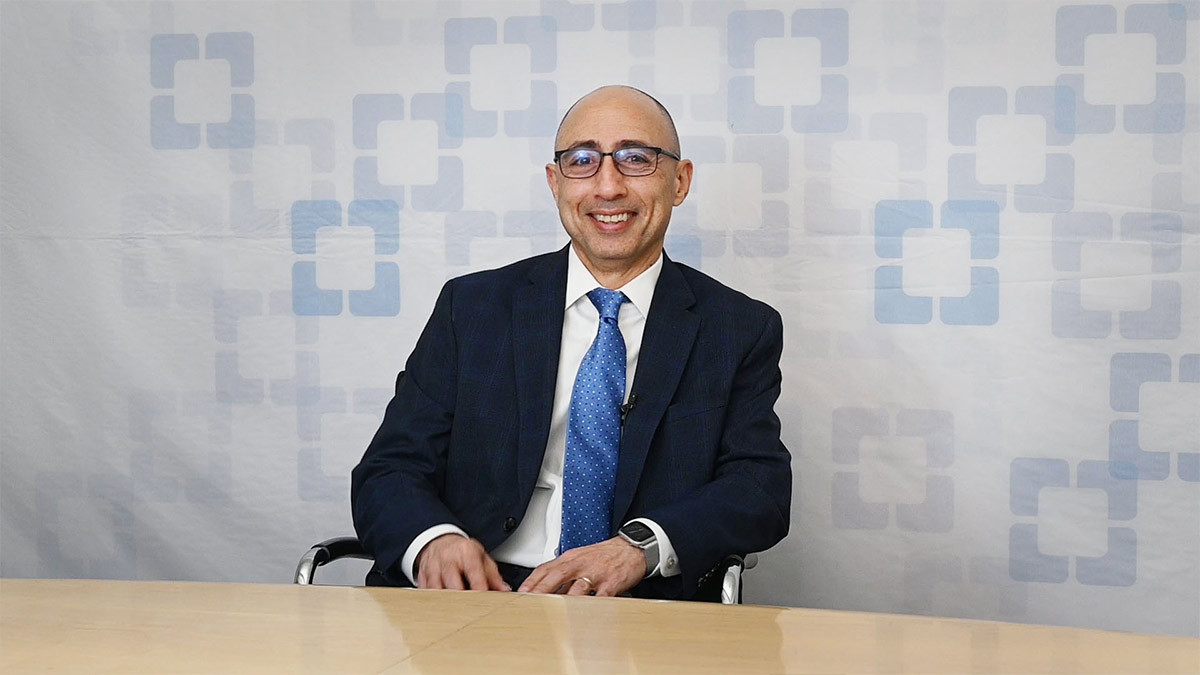INOCA (Ischemia with No Obstructive Coronary Arteries)

Patients who present with angina or even myocardial infarction may show mild or no coronary artery disease on coronary angiography. This condition, called INOCA or ischemia with no obstructive coronary arteries, is caused by microvascular dysfunction or vasospastic disorders. Dr. Khaled Ziada, a cardiologist at Cleveland Clinic specializes in this disorder and discuss how this condition is diagnosed and currently treated.
Learn more about the treatment of microvascular disease and coronary spasm.
Subscribe: Apple Podcasts | Podcast Addict | Buzzsprout | Spotify
INOCA (Ischemia with No Obstructive Coronary Arteries)
Podcast Transcript
Announcer:
Welcome to Cleveland Clinic Cardiac Consult brought to you by the Sydell and Arnold Miller Family, Heart, Vascular and Thoracic Institute at Cleveland Clinic.
Dr. Khaled Ziada:
I'm Khaled Ziada, I am one of the intervention cardiologists at the Heart and Vascular Institute. I wanted to talk to you today about microvascular coronary artery disease, which is an area that I'm interested in.
As we all know, we have a good number of patients that we see with either angina or even sometimes myocardial infractions and have no obstructive coronary disease or have mild coronary artery disease when we take them to the cath lab and perform standard angiograms. This is now has the name of INOCA or ischemia with no obstructive coronary arteries. And INOCA is becoming a really important topic because it is not rare and because we now have a little better understanding of how that happens.
INOCA can be caused by microvascular dysfunction or can be caused by vasospastic disorders. Microvascular dysfunction affects the small vessels that we can't see on angiography because of their size, but we can test for by using different tools in the cath lab. For example, measurement of coronary flow reserve, or measurement of index of microcircuitry resistance, measuring velocities of blood flow. For vasospastic disorders, we can use acetylcholine challenges or acetylcholine injections into the coronary arteries to demonstrate the presence of spasm and associated ECG changes with it or associated symptoms. So there are ways to test for microvascular dysfunction, there are ways to test for vasospastic disorders. Many of these tests are done in the cath lab, and we have the ability to make these diagnosis.
This is important because a lot of our patients who have chest pain and don't have large vessel disease or epicardial coronary artery disease are dismissed and considered to have chest pain caused by some other condition, which in many cases is not true, it's just a different form of coronary disease that we need to address. Here at the clinic we are able to offer these tests to patients who have either typical symptoms or objective evidence of ischemia, such as a positive stress test or sometimes even a small myocardial infarction evidenced by enzyme leaks. And then when we take them to the cath lab and find that their coronary angiograms do not reveal severe disease or obstructive lesions we're able to perform microvascular testing and vasospastic testing at the same time.
I think this is a very significant portion of patients, in particular this is more common in women than men and in those who have cardiovascular risk factors. And I think that there is good evidence now based on some of the more recent trials to show that if we do these tests, and if we guide our therapy on the basis of these results, we're able to actually relieve symptoms and improve quality of life.
This is an area of interest that I have been working on for some time. We are developing our program here at the clinic and engaging in more than one type of study. We are going to be looking at the diagnostic tests, the different types of tools that are now available to us to do these measurements and compare the different tests. We're also going to start thinking about using non-invasive tests to identify this disease. And we're starting to think about specific therapies. We don't have specific therapies at this point, but there are a few on the horizon and they're undergoing clinical trials. And we are happy to see those patients, sometimes we can enroll them in these new and upcoming studies, and sometimes we can offer them clinical care as well.
Announcer:
Thank you for listening. We hope you enjoyed the podcast. We welcome your comments and feedback. Please contact us at heart@ccf.org. Like what you heard, subscribe wherever you get your podcasts or listen at clevelandclinic.org/cardiacconsultpodcast.

Cardiac Consult
A Cleveland Clinic podcast exploring heart, vascular and thoracic topics of interest to healthcare providers: medical and surgical treatments, diagnostic testing, medical conditions, and research, technology and practice issues.



